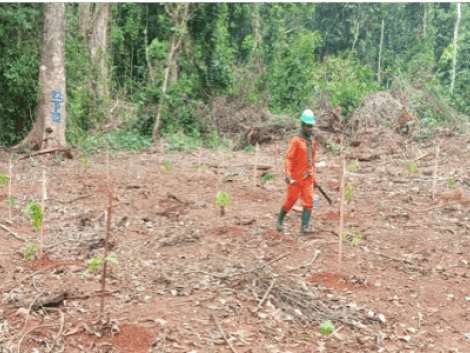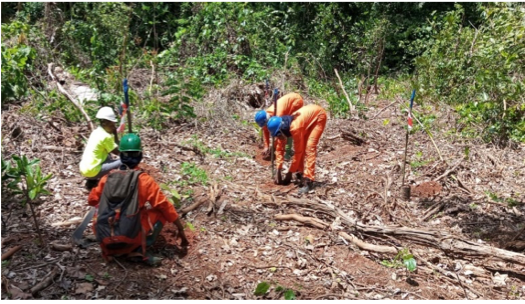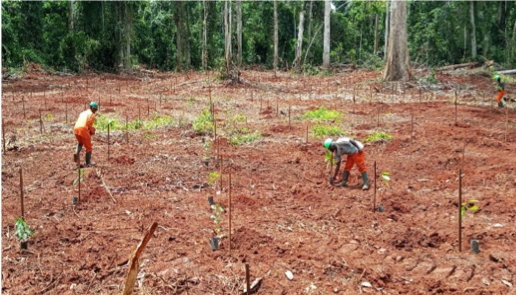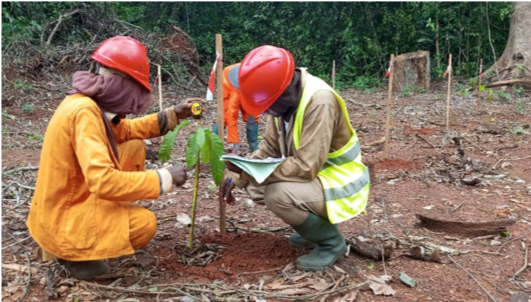

News | 02.09.2022
At the very beginning of the UFA-REFOREST project, a mission was carried out to make a detailed inventory of the existing nurseries and the seedlings available in the four forestry companies supervised by the project. This assessment revealed an initial stock of 35,000 seedlings divided into 24 different species, of which 13,000 were ready to be planted (height > 50 cm). A second joint mission with ATIBT's technical partners, namely Gembloux Agro-bio Tech, Nature+ and ENSET of Douala, allowed for a better definition of the reforestation strategy that will be applied in the different areas to be reforested: felling gaps, forest parks and plots in degraded environments.

After the nursery extension phase, staff were recruited and trained by the companies to carry out reforestation activities. This recruitment was carried out essentially within the local communities (young people, women, bakas) of the forest concessions involved in the project. The planting sites were prepared (clearing, staking, and digging) before proceeding with the actual planting phase, which could only take place after the return of the rains. During this first reforestation campaign, we counted a total of 544 felling holes and reforested parks, as well as nearly 8 ha of plots in degraded areas for all four companies involved in the project. This represents a total of 12,714 planted trees of 17 different local species.
 Reforestation in forest aisle
Reforestation in forest aisleThe start of the planting process faced several difficulties. First of all, we can mention the heavy rains observed during this first season (April, May, June 2022), which disrupted the work program of the teams in the field (trees on the road, days not worked). We then had to face the lack of plants at the required height for the plantations (height > 50 cm) in the nurseries. This lack of plants prevented us from planting more trees during this first reforestation campaign. We have therefore stopped the planting activities, at least for the first half of 2022.
 Reforestation in a degraded area
Reforestation in a degraded area In addition to these difficulties, we have also encountered logistical difficulties. The companies have seen their reforestation teams double or triple in size. The increase in these numbers required a large logistical input (personal skips, chainsaws, PPE, etc.). However, the companies did not have these logistics. Another difficulty, and not the least, was the fuel shortage observed in all the companies involved in the project during the first half of 2022. This shortage had three main consequences. First, the teams were not always able to go to the field to carry out the planting. Second, the preparation of the plots, which was done manually (clearing, felling), also slowed down the progress of the work in the field. The use of machinery (bulldozers) to clear the plots was not entirely possible, which significantly hindered the progress of the work and reduced the reforested areas during the first half of the year. Finally, due to this persistent shortage, some companies have seen their reforestation teams temporarily laid off.
 Measurement at installation (height/diameter)
Measurement at installation (height/diameter)If you are interested, you will find more technical information on these topics in the practical guide to planting trees in the dense rainforests of Africa, which is available for free access. This guide was developed by our technical partners Nature+, Gembloux Agro-Bio Tech.
tag(s) :